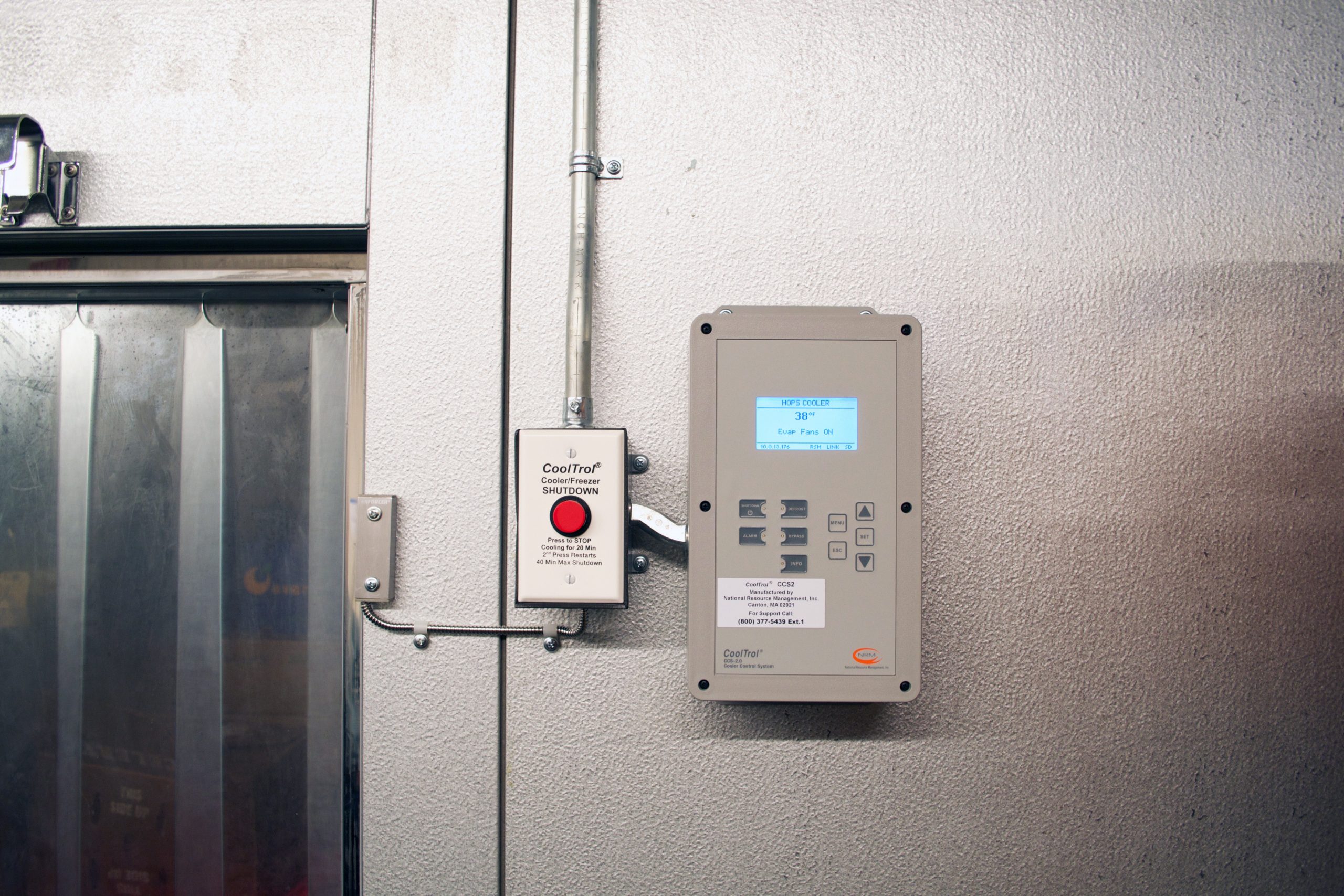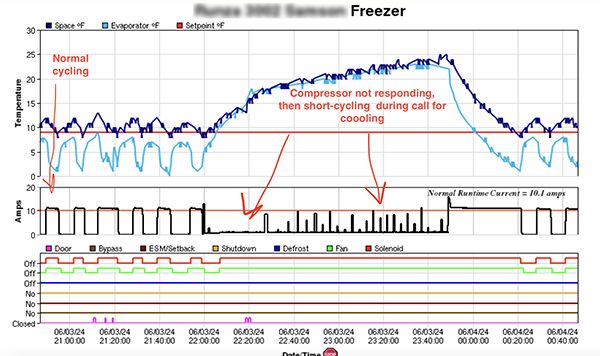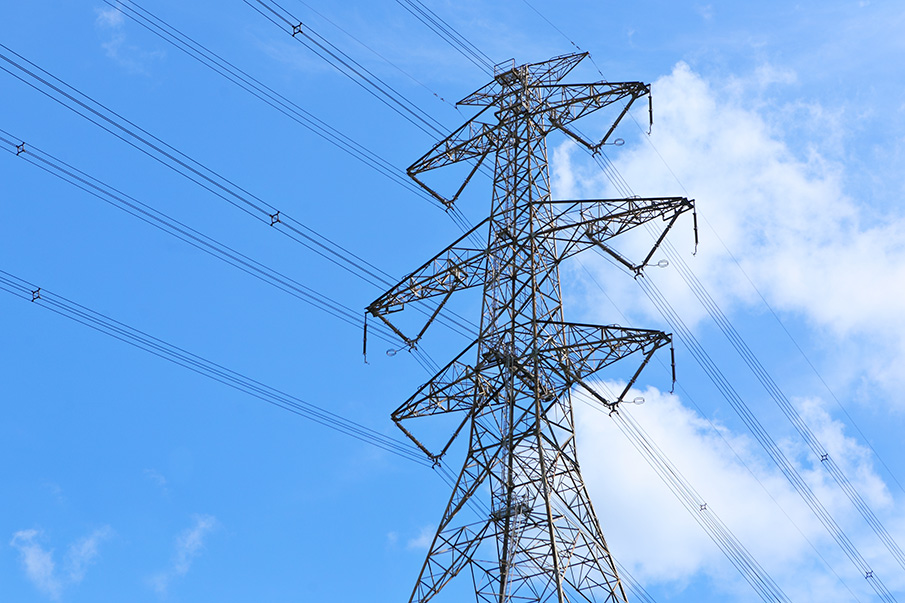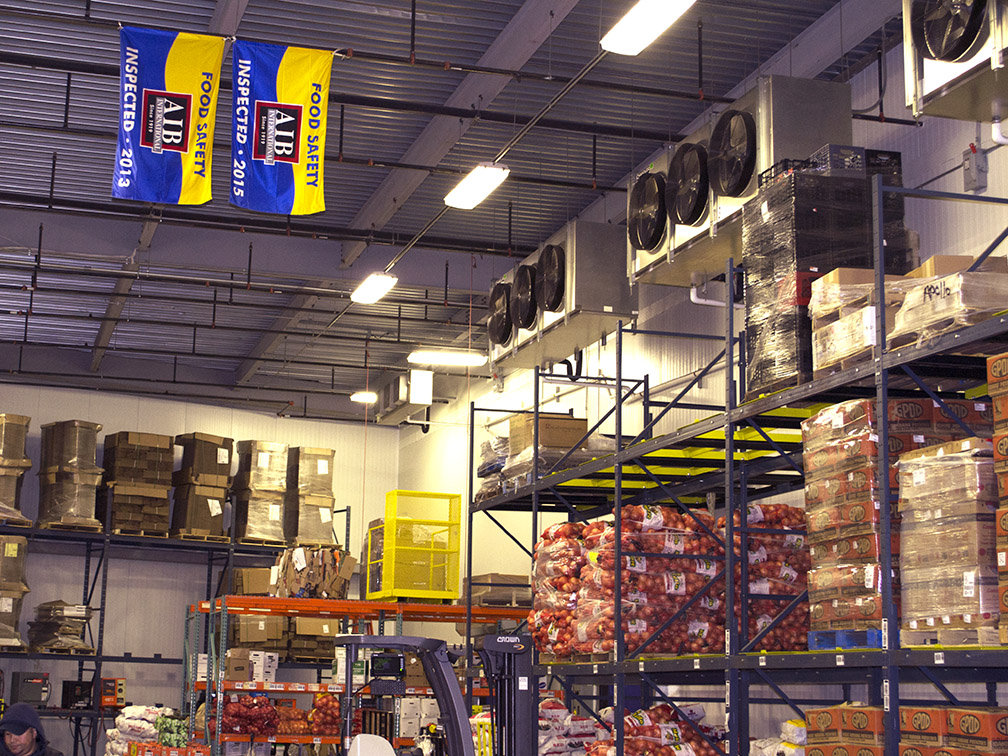“It’s almost like the check engine light in your car.”
This is how Charlie Sternberg, owner of S&S Refrigeration Co. in New Jersey, described the base value of NRM’s monitoring platform to greenHVACR magazine. As a refrigeration technician, any tool that improves his ability to effectively—and efficiently—solve his own clients’ issues is invaluable. And a tool specifically designed to offer the best, and most comprehensive, fault detection is worth its weight in gold. For Sternberg and his dedicated team of technicians, he found that sidekick in NRM’s controls and monitoring platform.
“What the NRM system provides is real-time system functionality and control, energy savings, monitoring, and notifications of potential issues,” he added. He’s heard feedback from his clients that they are more at ease knowing their product is constantly monitored. “It helps me as a contractor because I’m providing a viable and reliable service. It gives them more peace of mind.”
Which makes sense because the fear of losing that perishable product is very real. Consider this alarming statistic by the USDA: “In the United States, food waste is estimated at between 30-40 percent of the food supply. This estimate, based on estimates from USDA’s Economic Research Service of 31 percent food loss at the retail and consumer levels, corresponded to approximately 133 billion pounds and $161 billion worth of food in 2010.”
Sternberg was also quick to point out to the authors of greenHVACR‘s spotlight of NRM’s services that having user access to his customers’ monitoring dashboard (if the customer chooses to allow it) has reduced the number of nuisance calls, which makes everyone happy. “Driving a long distance to check a customer’s system for a minor problem is a waste of time and money,” he said. “With NRM, I can sit at my desk and maybe fix the problem remotely before we have to drive out to the site, like initiating a defrost remotely if a coil is iced up.”
The ability to see exactly when and where an issue began is paramount as it leads to quicker and better troubleshooting. Below, see an example of RSM’s monitoring detecting a problem with the compressor. An automated notification was sent out to the customer, “nudging” them to take a look at the system.
It isn’t only ref. tech companies that can, and do, benefit from NRM’s offering. greenHVACR also spoke with a few direct customers that have been relying on NRM for 10+ years. The beauty of NRM’s controls is its adaptability and user-friendliness. Quite literally, if your facility has any type of refrigeration system—refrigerated warehouse, laboratory cold-room environments, walk-in coolers, walk-in freezers, cold-product display cases—there is a good to great chance NRM has a way to optimize and monitoring that system. Everyone from dining facilities to pharmaceutical labs to grocery stores to produce distributors have seen gains in equipment performance, loss prevention, and in many cases, a 40-60% reduction in the system’s energy usage.
One such direct customer is State Garden, Inc. Michael Bruzzese, director of facilities, told greenHVACR he doesn’t know how he managed his facility before integrating NRM’s technology. He’s in charge of millions of dollars in products in three buildings, and oversees about 50 units. Bruzzese mainly uses NRM’s platform to monitor and maintain temperatures between the set boundaries. Because State Garden is a supplier for a handful of major grocery chains, their facilities are frequently audited. NRM’s platform has drastically reduced the amount of time he has to put into detailed record-keeping, as he can provide to-the-second historical data directly from the refrigeration system itself.
“It’s very convenient, and I don’t have to depend on other people to monitor things.” Bruzzese said.
Another large customer, Dole, has seen exceptional improvements in their systems’ energy usage after installing NRM’s smart controls. By implementing an alternating lead-lag schedule of the five refrigeration systems and installing destratification fans in the center of each aisle, NRM reduced Dole’s energy usage by over 50%. The new fans would constantly mix the air so it would be the same temperature at floor level and at up to 30 feet of product storage. This allows for redundancy where both units—the backup and the main unit—are exercised and used.
“By scheduling alternating run times, you get quite a bit of savings. Users need to know if one of their units go down since it’s their backup. They can’t wait until the first unit breaks down to figure that out,” Emre Schveighoffer, President and Founder of NRM, said.
In larger projects, the energy savings are often breathtakingly substantial. Harvard Dining, for example, has implemented NRM’s controls throughout their network of 40+ coolers and freezers, leading to annual kWh savings of about 216,000 kWh and roughly $35,000 in actual electric utility costs. Saying nothing for the unspoken savings of not losing equipment to catastrophic failure, and a cooler/freezer’s worth of product from the system going down. In the ten years that Harvard has had NRM’s platform keeping an eye on their equipment, they haven’t lost a single walk-in unit.
It isn’t only ref. tech companies that can, and do, benefit from NRM’s offering. greenHVACR also spoke with a few direct customers that have been relying on NRM for 10+ years. The beauty of NRM’s controls is its adaptability and user-friendliness. Quite literally, if your facility has any type of refrigeration system—refrigerated warehouse, laboratory cold-room environments, walk-in coolers, walk-in freezers, cold-product display cases—there is a good to great chance NRM has a way to optimize and monitoring that system. Everyone from dining facilities to pharmaceutical labs to grocery stores to produce distributors have seen gains in equipment performance, loss prevention, and in many cases, a 40-60% reduction in the system’s energy usage.
One such direct customer is State Garden, Inc. Michael Bruzzese, director of facilities, told greenHVACR he doesn’t know how he managed his facility before integrating NRM’s technology. He’s in charge of millions of dollars in products in three buildings, and oversees about 50 units. Bruzzese mainly uses NRM’s platform to monitor and maintain temperatures between the set boundaries. Because State Garden is a supplier for a handful of major grocery chains, their facilities are frequently audited. NRM’s platform has drastically reduced the amount of time he has to put into detailed record-keeping, as he can provide to-the-second historical data directly from the refrigeration system itself.
“It’s very convenient, and I don’t have to depend on other people to monitor things.” Bruzzese said.
Another large customer, Dole, has seen exceptional improvements in their systems’ energy usage after installing NRM’s smart controls. By implementing an alternating lead-lag schedule of the five refrigeration systems and installing destratification fans in the center of each aisle, NRM reduced Dole’s energy usage by over 50%. The new fans would constantly mix the air so it would be the same temperature at floor level and at up to 30 feet of product storage. This allows for redundancy where both units—the backup and the main unit—are exercised and used.
“By scheduling alternating run times, you get quite a bit of savings. Users need to know if one of their units go down since it’s their backup. They can’t wait until the first unit breaks down to figure that out,” Emre Schveighoffer, President and Founder of NRM, said.
In larger projects, the energy savings are often breathtakingly substantial. Harvard Dining, for example, has implemented NRM’s controls throughout their network of 40+ coolers and freezers, leading to annual kWh savings of about 216,000 kWh and roughly $35,000 in actual electric utility costs. Saying nothing for the unspoken savings of not losing equipment to catastrophic failure, and a cooler/freezer’s worth of product from the system going down. In the ten years that Harvard has had NRM’s platform keeping an eye on their equipment, they haven’t lost a single walk-in unit.
And while the energy savings are great, it is that level of protection and fault detection that Schveighoffer has said is the true value customers always relay back to him. “A lot of refrigeration systems only offer temperature monitoring. But if you have a problem with temperatures, don’t you want to know what caused it? We’re focused on the end-user and enabling them to quickly diagnose issues and determine the what, how, and when to best service their equipment.
It’s not about blame. It’s about how do we solve this problem so this doesn’t happen again?” he added.
Shawn Clarke, facilities manager at Thermo Fisher Scientific in Austin, Texas, agrees. “NRM lets me know there’s a problem before there’s a problem.” Clarke relies on the platform to avoid emergencies. Avoiding equipment failure is paramount considering their facility houses medical supplies, including biomedical products for cancer research. “NRM has the one software system that actually works for me,” he said. “It has allowed us to be more of a preventative facility team versus a reactive facility team. Now we actually have some time to figure out the issue.”
greenHVACR laid out a quick table of what they concluded were the most important benefits that NRM’s customers achieved after speaking with a handful of them:
Scheduling Options
-
Schedule temperature setpoints and system ON/OFF for energy demand, production times, seasonality
-
Schedule for alternating times (lead-lag) for main and spare units to make sure both are running properly
Time Savings
-
Fix minor issues remotely to avoid the driving to site
-
Know what the problem is before you arrive
Improved Maintenance
-
Save on maintenance costs by preempting emergencies
-
Be proactive instead of reactive
Fault Detection
-
Get email and text notifications to help prevent major breakdowns and alert user of poor performance
-
Customize the alerts you receive, such as:
-
Device stops communicating
-
Compressor or probe fails to respond
-
Excessive runtime
-
Short-cycling
-
Temperature is too low or too high
-
Saving Energy
-
Monitoring based commissioning for continuous improvement and optimization
-
Intelligent management of cooling, evaporator fans, anti-condensate heaters, setbacks, and defrost can reduce operating costs by up to 50%
-
Adaptive defrost saves energy by initiating defrost only as needed
Detailed Information
-
Summary page shows temperatures, equipment status, and diagnostics at a glance
-
24-hour: weighted average temp, number of compressor starts, percent run time of compressor and evaporator fans
-
Data and information is updated in real time
Accessible Data
-
Generate graphs for individual units
-
Access data quickly for audits
-
Set specific time intervals for viewing granular reports and download historical data as CSV file
Convenience
-
Easily switch control between Run and Bypass mode for servicing and diagnosing an issue
-
Access from any web browser on PC, tablet, and mobile phone
Read the full feature in the June/July issue of greenHVACR Magazine: http://greenhvacrmag.com/issue-archive/




